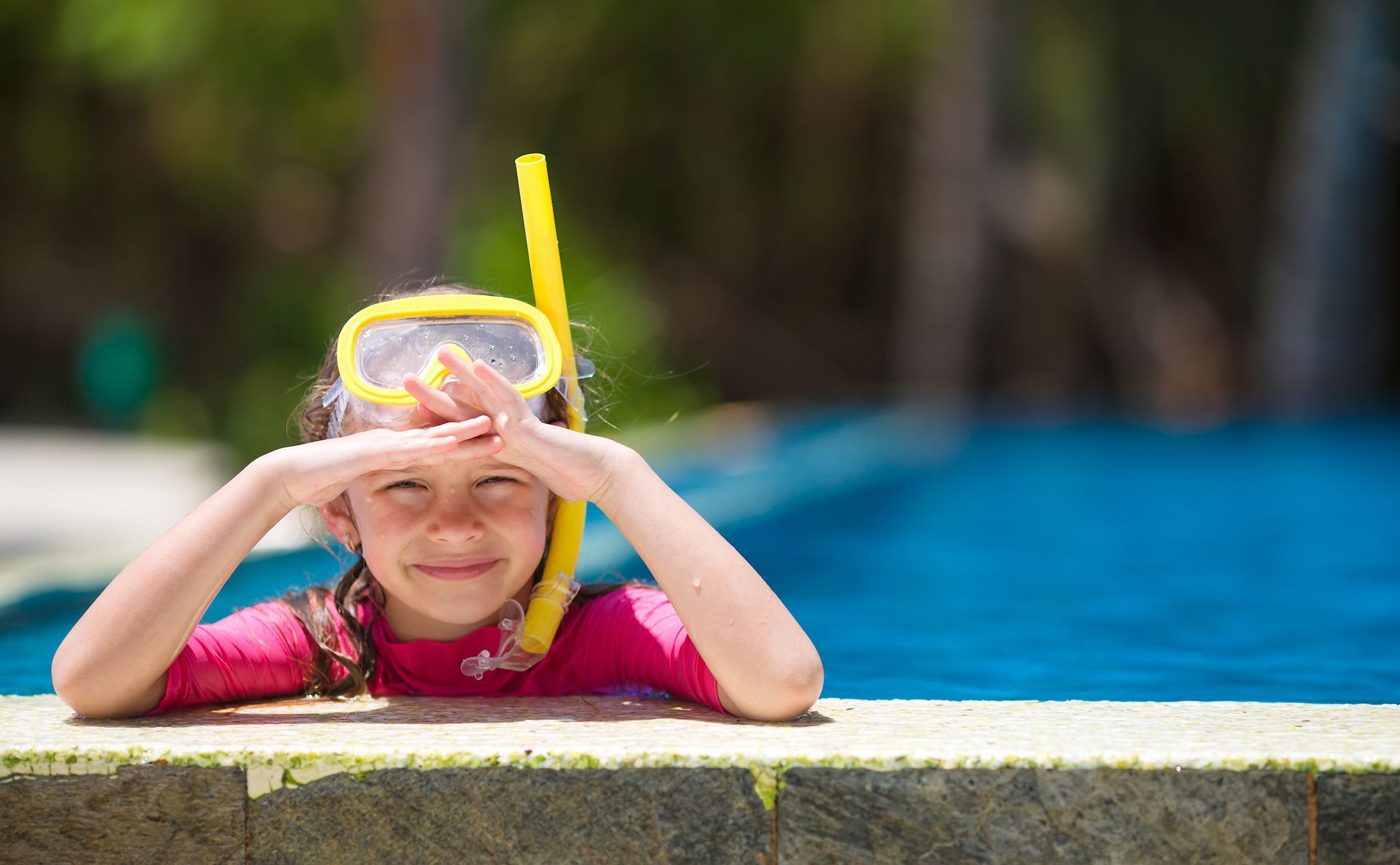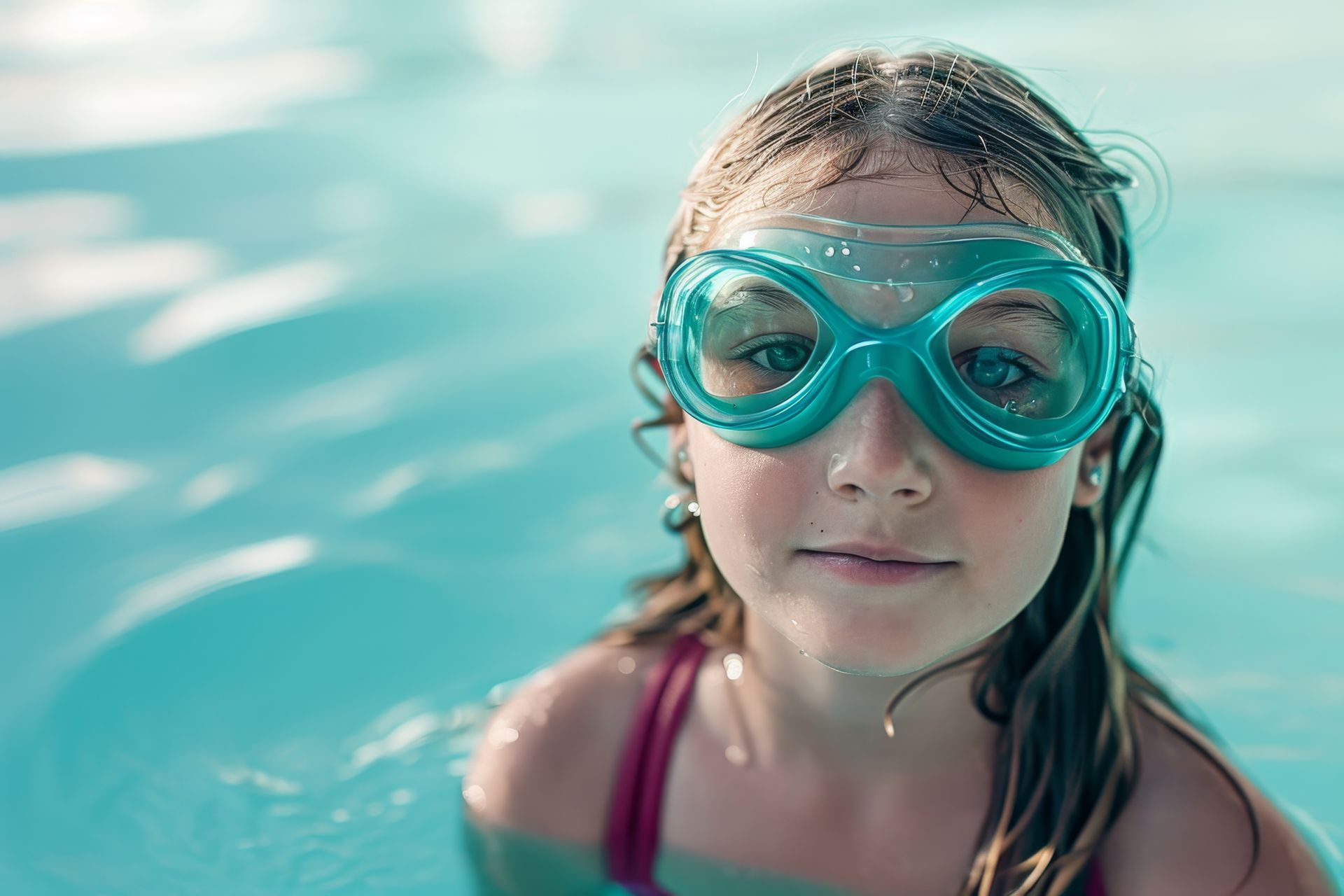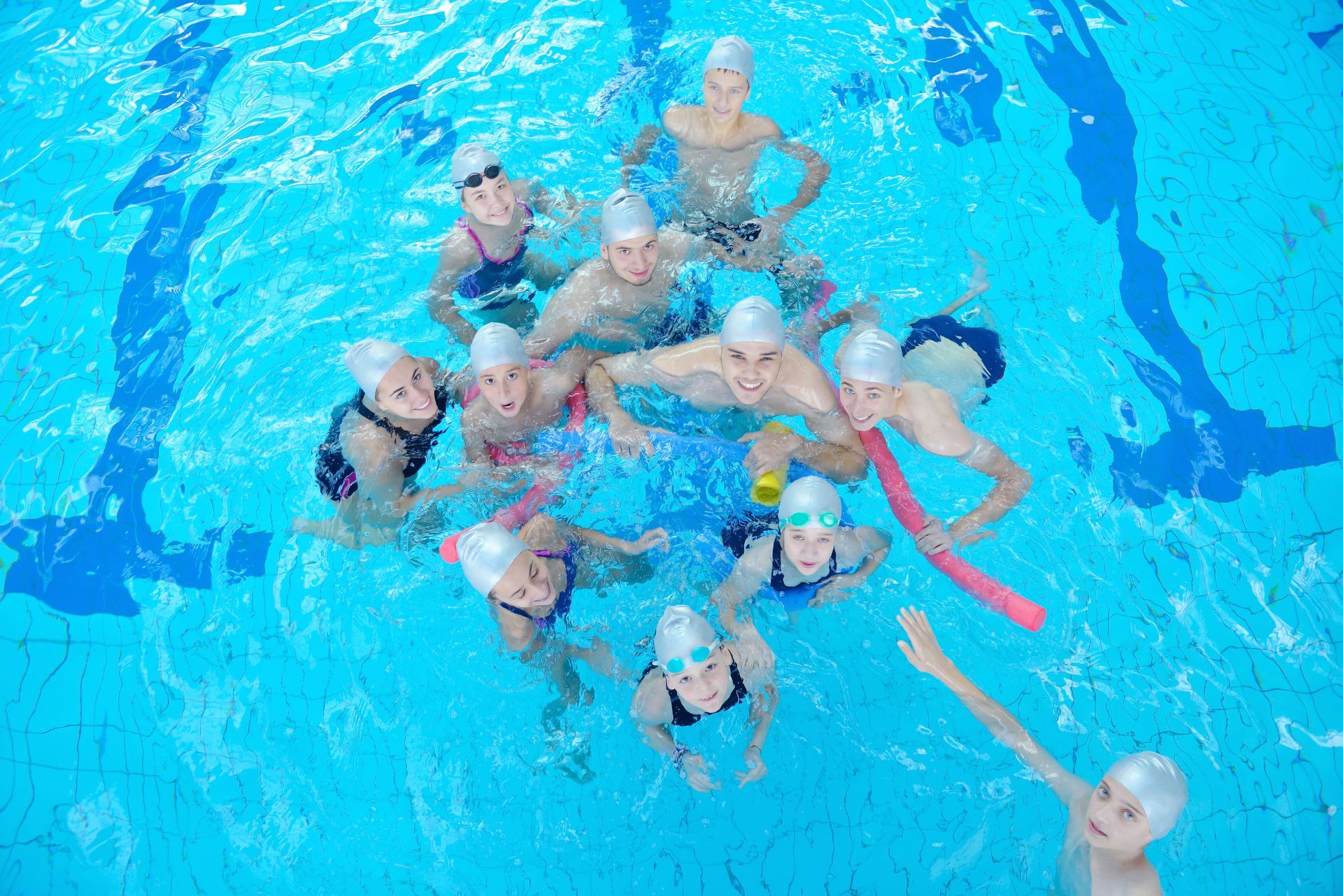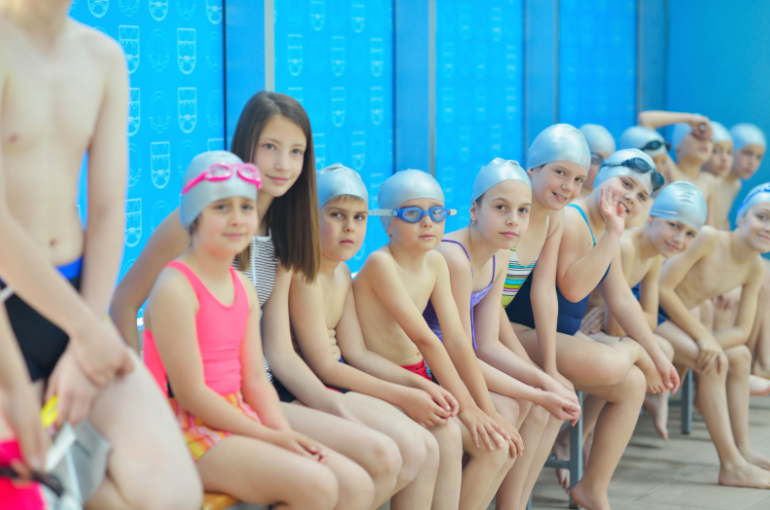How to Tread Water
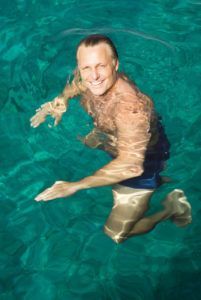
Treading water is a life-saving skill. If you or your child is ever in water, it’s important for you to be able to get to the surface of the water, catch your breath, and get enough strength to either swim to the side of the pool or wait for help. Treading water should be a relaxing and sustainable activity to keep your head above water, and can be increased in intensity if you want an extra workout.
Treading Water: Key Steps
Learning how to tread water is a lot like other strokes that your kid will learn. Though they might have some difficulty when they first start, with practice and patience, they will be able to tread water comfortably.
Body Position

For many people, they want to raise their head and neck out of the water to breathe, but this isn’t the best way to tread water. The air right above the water is just as good as the air six inches above the water, so why waste energy to lift yourself out of the water if you don’t need to?
The water level should be kept around chin level. This takes a while to get comfortable with for new swimmers, but it’s important to learn that as long as your mouth is touching air, you can breathe.
How to Scull with Your Arms
Learning how to scull requires a trip to the beach or playground. Find two small piles of dirt or sand, and move it back and forth from your body. That movement is the exact same movement your kid will use when treading water.
How to Do the Eggbeater
It might feel easier for someone learning to use a kick from a stroke that they already know, but these are not efficient kicks when it comes to treading water, and they’ll get tired faster. The best kick to use when treading water is the eggbeater, or rotary, kick . It keeps the body stable without having to bob up and down.
- To do the eggbeater kick, start by sitting in an office chair where you can lean back and let your feet dangle or on the side of the pool with your feet in the water. Move your right leg counterclockwise. Once you are comfortable with your right leg, switch to your left leg and move it in a clockwise motion.
Make sure you are comfortable with both feet moving in their respective motions before moving on, because the next step is to move both feet at the same time.
- Start with both feet at the top of the circle they will travel on, and circle both of them down and around. After that, you have to work on the timing of your legs moving, as they don’t follow the same pattern at the same time. Start your feet staggered from each other, with your right foot on the top of the circle, and your left foot at the bottom, and then start swinging your feet in circles.
- When you get into the water, your body position in the water will stay exactly the same as you were when you were sitting. It’s important to stay compact and look like you are sitting when treading water.
Together with your hands sculling you should be treading water, and with practice, you will start to feel more comfortable with the motions and see that it does not require that much energy to stay above water.
How Long Can You Tread Water?
It is possible to tread water for an extended period of time if a swimmer is comfortable with the movements and has practiced before. If they’re willing to take short breaks while floating on their backs rather than actively treading water, they can tread water for over eight hours .
Is Treading Water Good Exercise?
Treading water is great exercise. It is low impact, involves your full body, and is great for cardiovascular health. Treading water is also scalable and can be made harder with slight variations. Consider treading water with a dive brick , or using other kicks besides the eggbeater to work different muscle groups.
How to Tread Water for Water Polo
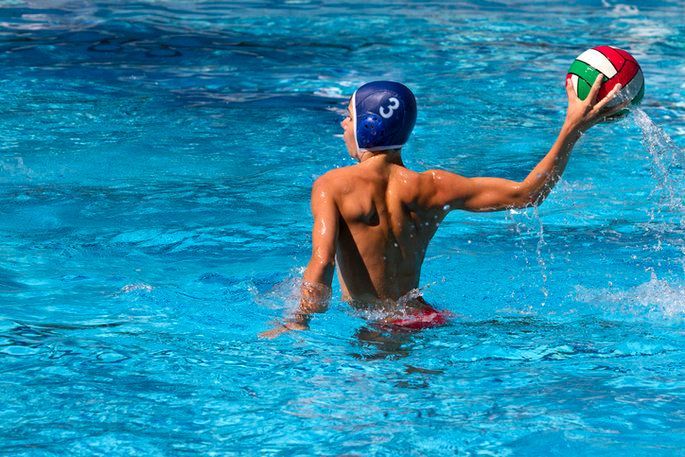
Water polo is an intense sport that is almost like playing soccer while in water, with a strict rule of never touching the side or bottom of the pool. Even during time outs and penalty shots, water polo players are treading water.
For some swimmers that play the entire match without a substitution, they could stay in for almost an hour. During that time, there will be bursts where each swimmer will be required to sprint to grab a loose ball or break away from a defender, raise their body up and out of the water without their arms, so they can block a shot or catch the ball, and do it all surrounded by other swimmers.
The first and most important thing to do when treading water for water polo is to master the eggbeater kick. From there you can start to focus on learning how to tread water without hands. The start of this is a strong eggbeater kick. From there, swimmers practice by using their arms less and less as part of treading water. They’ll start with using no hands, and then raising their hands out of the water to their ears, and then ultimately above their head entirely.
Another adjustment for treading water for water polo is knowing how to pop out of the water. Just because a swimmer’s arm is out of the water doesn’t mean they’re reaching as far as they can. The easiest way to pop out of water is to do one strong breaststroke kick to give a push up and out of the water and then switch to eggbeater kick to try to sustain that height as long as possible.
For starting water polo players, the goal should be able to get their shoulders or the top of their chest out of the water. This will allow them to better catch and throw the ball, as well as defend against shots and passes. Some positions like the goalie, it is sometimes expected to be able to get out of the water up to your hips to be able to defend the entire goal.
Contact Us
SwimJim can help your child reach their goals in the water. Whether they are learning to tread water for safety or because they’re trying to get the extra strength for water sports, SwimJim’s trained coaches can help. Contact us today to learn more about how to connect with experienced instructors.
The post How to Tread Water appeared first on Swim Jim.
